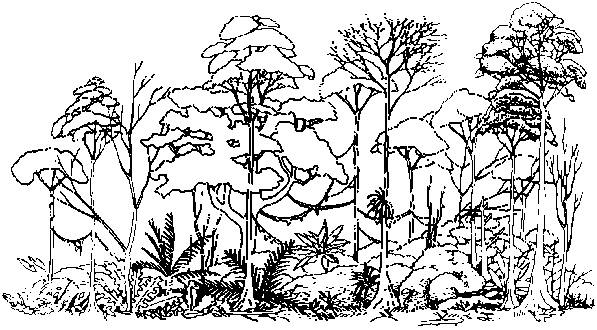This study focuses on the following issues:
- How are forest resources used at the local level, and how do they contribute to the sustenance of the household?- In what ways do different communities value (both tangibly and intangibly) forest resources in this region? How are these values changing with the extreme environmental and economic evolution taking place throughout the region?
- How has commercialisation of rural economies affected exploitation of forest resources?
Little information exists in the forestry literature to directly address these issues. However, as forest resources are used in so many ways, they are discussed (if somewhat incidentally) under many guises: evaluations, socio-economic surveys, market studies, food consumption surveys, ethnobotanic studies, studies of the “informal” sector, and studies of farming practices. Information can therefore be gleaned indirectly. For example, information on the forest products that are used for house construction can be found in housing surveys and socio-economic evaluations (which include information on different housing types and their prevalence); economic studies (which can estimate the costs of living and often include information on the quantity of material required (or costs) for different house types); ethnobotanic studies (which can also include information on the materials used for house building).
The study draws on research conducted in many disciplines: anthropology, botany, economics, ethnobotany, ethnomedicine, farming systems, forestry, wildlife management, geography, nutrition, and rural development. In addition, it includes information from a variety of different government agencies and ministries as well as in-country NGOs and international development agencies. It draws together this information to examine the practical and symbolic importance of forest resources to rural households. It assesses the kinds of information that are available, and explores the ways in which forestry activities could better incorporate the needs and interests of local people.

The study is divided into two parts. Part I serves two purposes. The first four chapters review what is known about the way people use and value the forests of the region. It divides the uses of forest products by function. The second set of three chapters is analytical in nature. It examines: the way forest product use has changed and is changing; how the importance of non-timber forest products can be assessed; and those forestry activities that could be developed in order to incorporate the values and needs of people.
This is followed by Part II, an extensive annotated bibliography that includes an overview of the literature and assesses the availability of information. More than 300 sources are reviewed to provide more specific information about the studies and publications that are cited in the text. As many of the information sources are unpublished and difficult to locate, these summaries will often be structured to serve as detailed outlines of the works.
The shea butter tree yields a valuable vegetable oil